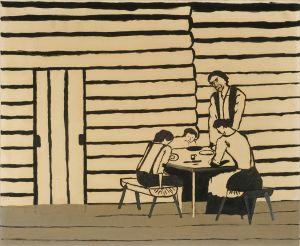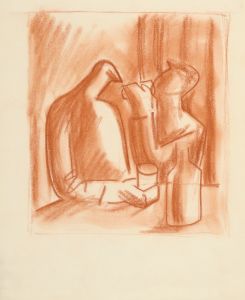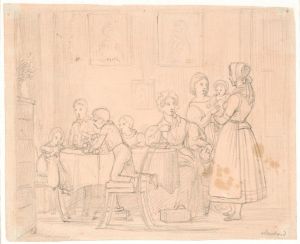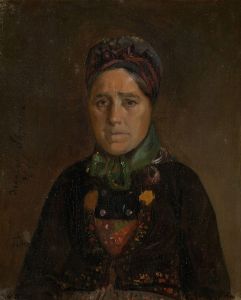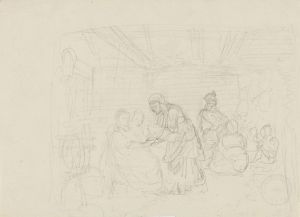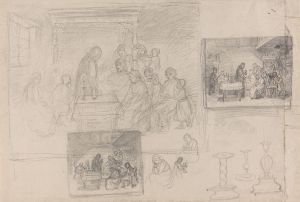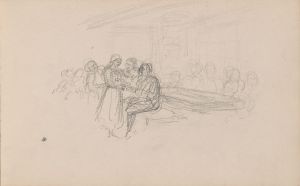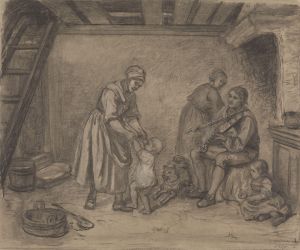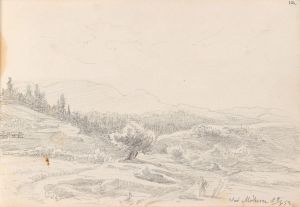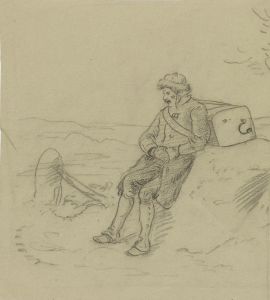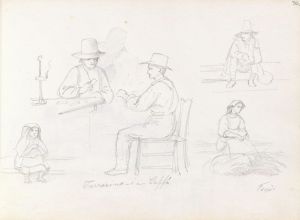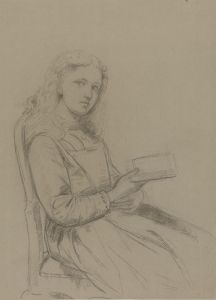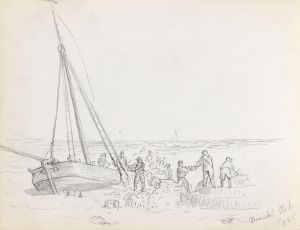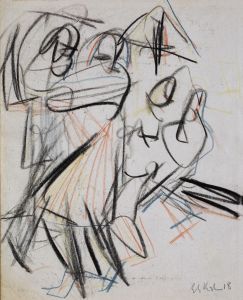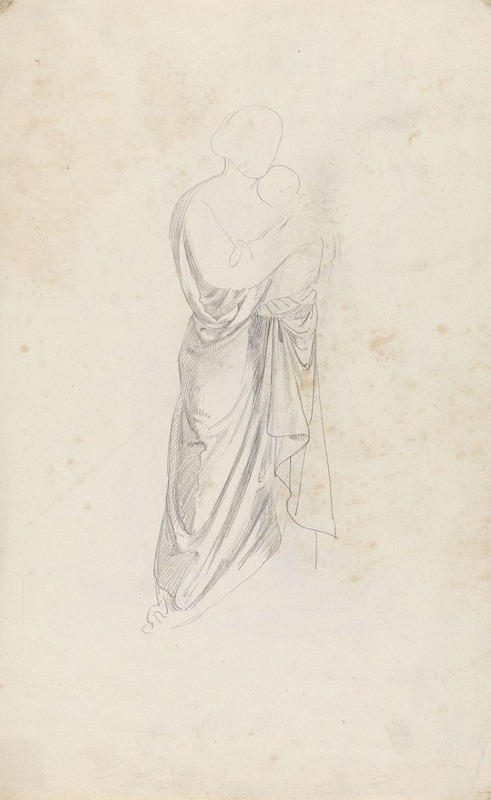
Gevantstudie
A hand-painted replica of Adolph Tidemand’s masterpiece Gevantstudie, meticulously crafted by professional artists to capture the true essence of the original. Each piece is created with museum-quality canvas and rare mineral pigments, carefully painted by experienced artists with delicate brushstrokes and rich, layered colors to perfectly recreate the texture of the original artwork. Unlike machine-printed reproductions, this hand-painted version brings the painting to life, infused with the artist’s emotions and skill in every stroke. Whether for personal collection or home decoration, it instantly elevates the artistic atmosphere of any space.
Adolph Tidemand was a prominent Norwegian painter in the 19th century, renowned for his detailed and evocative depictions of Norwegian folk life and traditions. His works often captured the essence of rural Norway, portraying its people, customs, and landscapes with a deep sense of realism and empathy. One of his lesser-known works is "Gevantstudie," which translates to "Study of Garments" in English. While there is limited specific information available about this particular painting, we can explore Tidemand's broader artistic context and style to provide a general understanding of his approach and significance.
Adolph Tidemand was born on August 14, 1814, in Mandal, Norway. He studied art in Copenhagen and later in Düsseldorf, Germany, which was a significant center for art education at the time. The Düsseldorf School of Painting, where Tidemand honed his skills, was known for its emphasis on detailed realism and historical themes. Tidemand's education and experiences in Düsseldorf greatly influenced his artistic style, which combined meticulous attention to detail with a narrative quality that brought his subjects to life.
Throughout his career, Tidemand focused on capturing the cultural and social aspects of Norwegian life. His paintings often depicted scenes from rural Norway, highlighting traditional costumes, customs, and everyday activities. This focus on national identity and cultural heritage resonated with the Norwegian public, especially during a time when Norway was seeking to establish its own cultural identity separate from Denmark and Sweden.
"Gevantstudie" likely fits within this context of Tidemand's work, as it suggests a study or exploration of garments, which were an integral part of his portrayal of Norwegian folk life. Tidemand's attention to clothing in his paintings was not merely decorative; it served as a means to convey the social status, regional identity, and cultural practices of his subjects. By meticulously rendering the textures and patterns of traditional Norwegian costumes, Tidemand provided viewers with a window into the lives and identities of the people he depicted.
Tidemand's work was characterized by a strong narrative element, often telling stories through the interactions and expressions of his subjects. His paintings were not static portraits but dynamic scenes that invited viewers to engage with the lives and experiences of the people portrayed. This narrative quality, combined with his technical skill, made Tidemand one of the leading figures in Norwegian art during the 19th century.
While specific details about "Gevantstudie" are scarce, it is reasonable to assume that the painting reflects Tidemand's broader artistic goals and themes. His dedication to capturing the essence of Norwegian life and his ability to convey complex narratives through his art have left a lasting impact on the cultural heritage of Norway. Tidemand's work continues to be celebrated for its historical significance and its role in shaping the visual identity of Norway during a pivotal period in its history.
In summary, Adolph Tidemand's "Gevantstudie" is a testament to his skill as a painter and his commitment to documenting the cultural fabric of Norway. Through his detailed studies of garments and his broader body of work, Tidemand has provided invaluable insights into the lives and traditions of 19th-century Norwegians, ensuring that their stories and identities are preserved for future generations.





